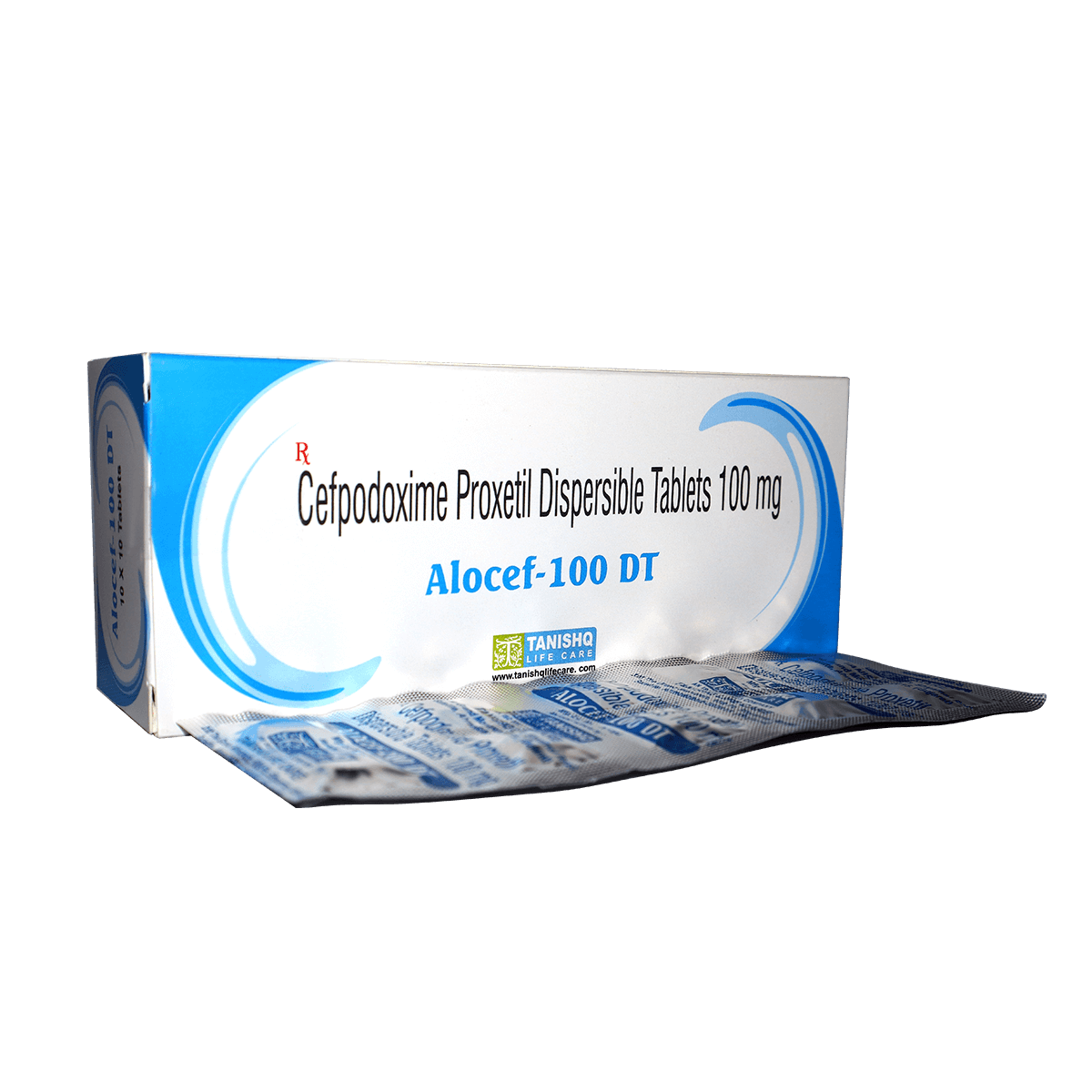
Alocef 100 DT
Cefpodoxime Proxetil is an oral cephalosporin antibiotic used to treat bacterial infections. It is a second-generation cephalosporin that acts by inhibiting bacterial cell wall synthesis, leading to the death of bacteria. It is commonly used for the treatment of infections caused by susceptible microorganisms in various body systems.
- Recommended Usage
Indications
- Upper Respiratory Tract Infections: Including sinusitis, pharyngitis, and tonsillitis.
- Lower Respiratory Tract Infections: Such as bronchitis and pneumonia.
- Urinary Tract Infections: Including cystitis and pyelonephritis.
- Skin and Soft Tissue Infections: Caused by susceptible strains of bacteria.
- Ear Infections: Otitis media caused by sensitive bacteria.
- Gonorrhea: Particularly uncomplicated infections caused by Neisseria gonorrhoeae.
Dosage and Administration
The usual dosage for most infections is 100 mg to 200 mg of Cefpodoxime Proxetil per day, depending on the type and severity of the infection. The dose is typically divided into two doses per day.
For children, the dosage depends on the child’s weight and the type of infection. A typical dosage is 5 mg/kg once or twice daily.
The dispersible tablet should be dissolved in water before taking. It can be taken with or without food.
Precautions
Cefpodoxime should not be used in patients who have a known allergy to cephalosporin antibiotics. A cross-reaction can occur with penicillin allergies as well.
In patients with impaired renal function, dose adjustment may be necessary. The drug is excreted primarily through the kidneys, and impaired renal function can lead to drug accumulation.
Cefpodoxime may cause gastrointestinal upset, including diarrhea, nausea, and abdominal discomfort. Severe diarrhea may be a sign of Clostridium difficile infection.
Prolonged use of cefpodoxime may lead to overgrowth of non-susceptible organisms, such as fungi or resistant bacteria.
The safety of Cefpodoxime Proxetil during pregnancy has not been established. It should only be used during pregnancy if clearly needed. The drug is excreted in breast milk; caution should be exercised when administering to nursing mothers.
Benefits
Broad-Spectrum Action: Effective against a wide range of gram-positive and gram-negative bacteria, treating infections like respiratory, urinary tract, and skin infections.
Convenient Form: The dispersible tablet is easy to administer, especially for children or individuals who have difficulty swallowing pills.
Effective for Resistant Infections: Works against penicillin-resistant and beta-lactamase-producing bacteria.
Well-Tolerated: Generally has a good safety profile with mild side effects like gastrointestinal disturbances.
Short Treatment Duration: Often requires a shorter course, improving patient compliance.
Product Category
- Anti Infective
- Injectables
- Pre Filled Syringe
- Immunosuppressants
- Anti Ulcerant/ppis
- Joint Care
- Enzymes
- Heamatinic Agents
- Antioxidant Multivitamins
- Laxatives
- Anti Alergic
- Corticosteroids & Combinations
- Anti Fungal
- Medicated Soaps
- Emollients and Moisturisers
- Face Care
- Puva & Sun Protectors
- Hair Care
- Anti Acne Preparation
- Analgesics Antipyretics & Anti Inflammatory
- Anti Spasmodic & Anti Emetic
- Expectorants Antitussives & Mucolytics
- Antidiarrheals
- Cardiac Drugs
- Antipsychotics
- Anti Epileptics
- Migraine
- Anti Dyspetic
